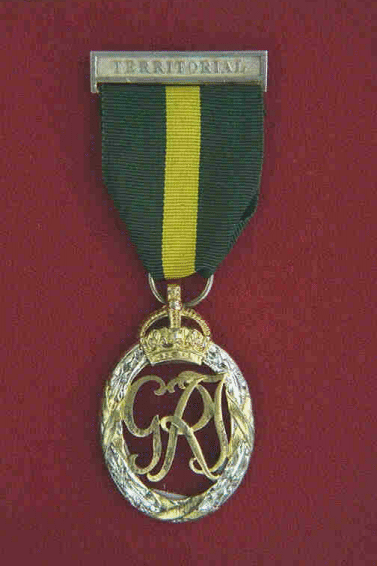Efficiency Decoration Territorial
Description
Context
This long service decoration was established in 1930 to replace the Volunteer Officers Decoration (1892), the Colonial Auxiliary Forces Decoration (1899), and the Territorial Decoration (1908). The conditions of the award were amended in 1940, 1946, twice in 1949, 1952 and by Royal Warrant printed as a Special Army Order, No. 136, of 24 November 1952. The decoration was also awarded to Royal Canadian Air Force (RCAF) Auxiliary and Reserve officers until the introduction of the Air Efficiency Award in 1942.
Eligibility and Criteria
This decoration was awarded for 20 years of service to Commissioned Officers of the Non-Permanent Active Militia. The RCAF Auxiliary and Reserve officers also qualified until the Air Efficiency Award was introduced in 1942.
Description
This decoration consists of silver and gold and is 1.5 x 1.25 inches.
The obverse consists of an oval oak wreath (1.5 x 1.25 inches) in silver tied with gold, with the Royal cypher and crown, also in gold. There is a bar broach at the top of the ribbon bearing a subsidiary title showing whether the recipient served in the Territorial Army or one of the other Auxiliary Military forces of the Commonwealth.
The green ribbon is 1.5 inches wide, with a central yellow stripe.
In December 1906 King Edward VII gave permission to members of the Honourable Artillery Company to wear a special ribbon with the old Volunteer Decoration. Its use is still continued, though the privilege is not automatic. Composed of the King's racing colours, the special ribbon is half dark blue, half scarlet, with corded edges of yellow.
Bars
Awarded for each additional 20 years of service.
Historical Notes
- Approximately 3,700 decorations were issued to Canadians.
